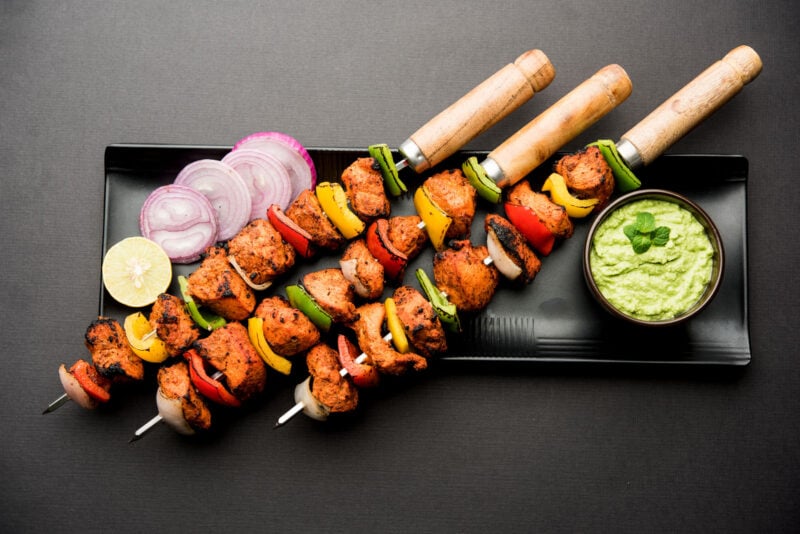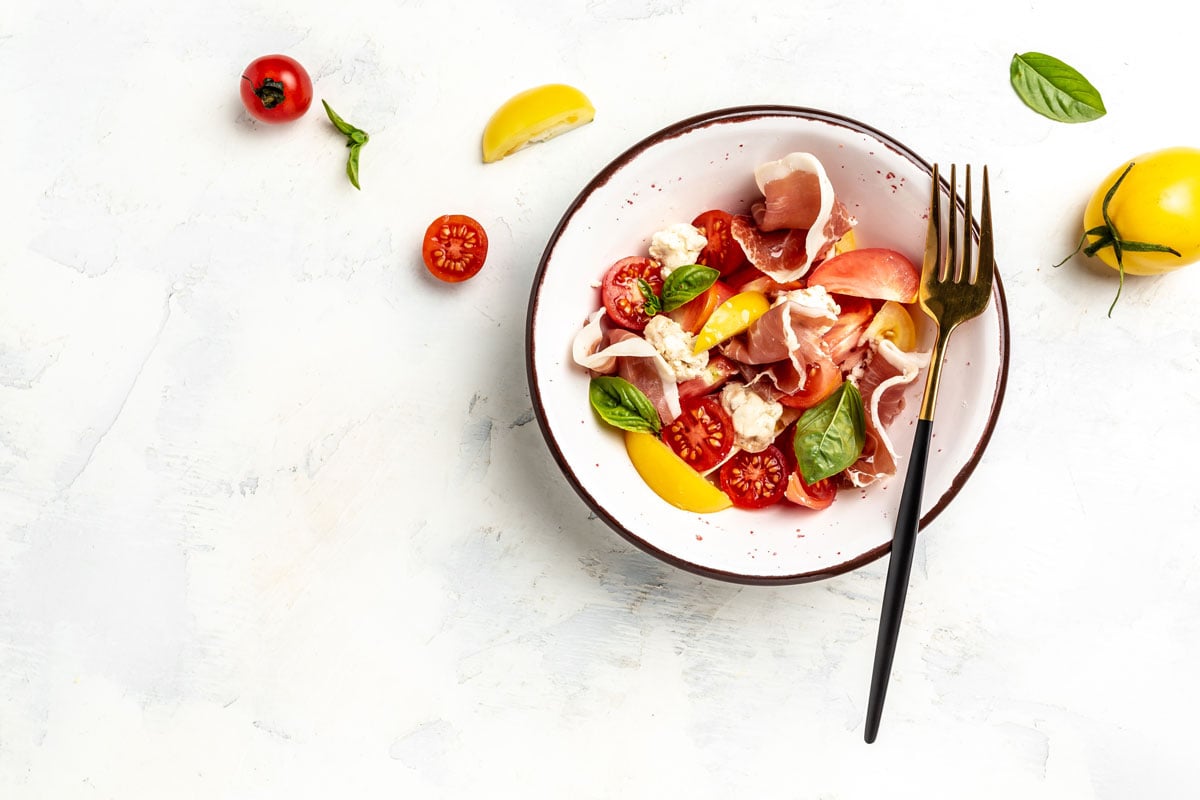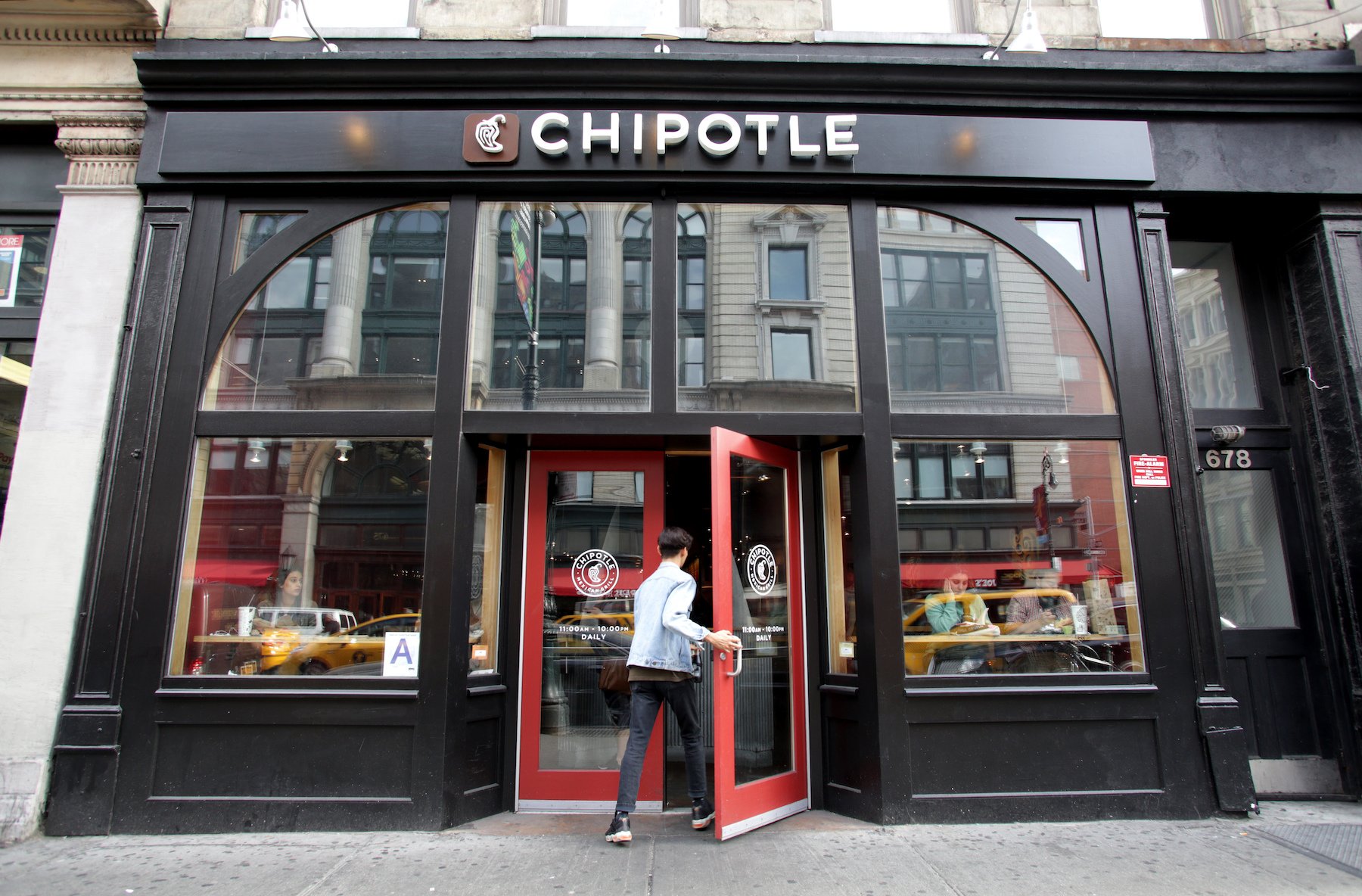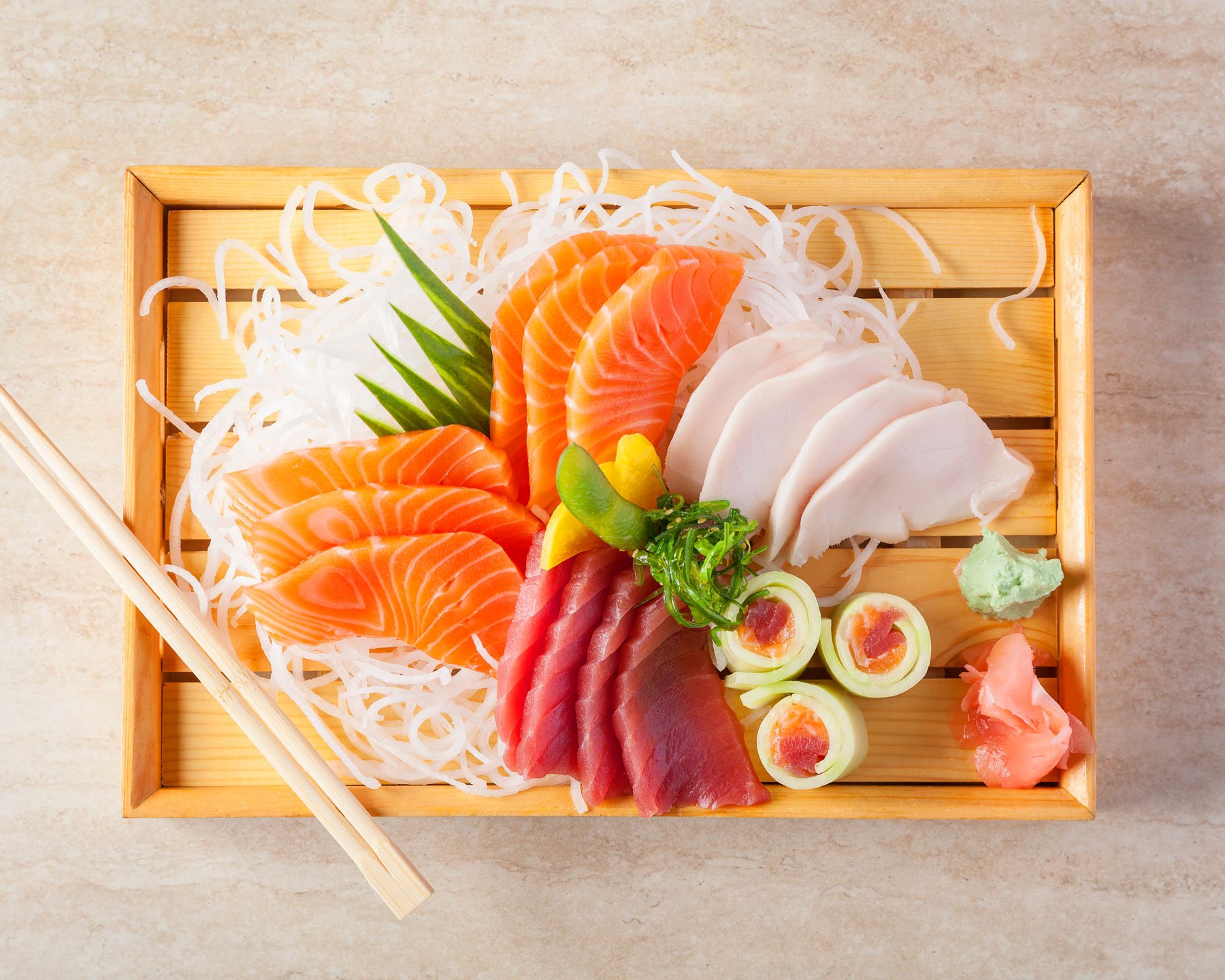If you’re trying to eat for metabolic health, Indian restaurants can be tricky to navigate. On one hand, the menu is full of vegetables and anti-inflammatory spices, such as turmeric, ginger, cumin, coriander, and pepper. On the other hand, many of the dishes can send your blood sugar soaring.
That’s because the main courses are usually served with refined grains like basmati rice and naan (a type of flatbread). Other dishes, like samosas, feature a carbohydrate-heavy dough that’s deep-fried. According to data from Levels members, these items can cause higher blood glucose spikes than jelly beans can, with a significant glucose rise of roughly 45 mg/dL for samosas and 43 mg/dL for naan.
Because most Indian restaurants are family or independently owned, it’s rare to find a breakdown of ingredients and nutrition stats. However, with some savvy, you can decipher the menu and choose nutritious Indian dishes that keep your blood sugar steady.
The Metabolic Challenge at Indian Restaurants
In India, the cuisine ranges widely by region, from the rich curries in the north to the thin crepes called dosas in the south. In the United States, Indian restaurants typically feature dishes from the Punjab region of northwestern India.
This cuisine features curries, or spiced stews and gravies made from beans, legumes such as lentils, vegetables, seafood, and meat. Punjabi curries often use cream, so they’re high in calories and saturated fat, says Shefaly Ravula, PA-C, a board-certified physician associate, nutritionist, and founder of Precision Metabolic Health, PLLC. What’s more, a sizable amount of sugar is added for extra sweetness. “It’s not common in most regional Indian home cooking, but restaurants tend to cater to the Western palette,” Ravula explains.
Curries are paired with rice and breads, such as naan, which are made with refined grains. During processing, the fiber-rich outer layer (called the bran) is stripped from the soft core of the grain. Because fiber slows digestion and the release of glucose into the bloodstream, refined grains like rice and wheat can set off a blood sugar roller coaster. In the short term, this can leave you feeling tired and hungry. Over time, these spikes and crashes can blunt the body’s insulin response and raise the risk for metabolic conditions like diabetes and heart disease.
In other dishes, carbs are the centerpiece. Both biryanis and pulaos feature rice, while many appetizers, such as samosas, feature a carb-heavy batter and starchy potatoes. The cooking methods for these starters make matters worse: they are deep-fried. In India, people mostly cook with coconut oil or ghee (clarified butter), Ravula says. “But restaurants tend to go with what’s cheaper, which are highly processed, pro-inflammatory oils.” These refined vegetable and seed oils are high in omega-6 fats. A diet high in omega-6s is linked with inflammation and a potentially increased risk for Type 2 diabetes and obesity.
You should also dip and sip with caution. Indian food is served with savory condiments called chutneys. These are traditionally made with only slow-cooked fruit or vegetables, vinegar, and spices. But American restaurants tend to load fruit chutneys, such as mango and tamarind, with added sugars. Popular beverages, including masala chai (a spiced tea) and mango lassi (a yogurt and fruit drink), are also sugar bombs. For example, one brand of mango lassi contains 25 grams of added sugars per cup, or about six teaspoons’ worth.
7 Steps to a Healthier Indian Meal
1. Start with a soup or salad.
Many Indian appetizers use a carb-heavy batter or breading before they’re deep-fried. These include samosas (a stuffed pastry), pakoras (fritters), and bhajis (another type of fritter). Although soups and salads aren’t very common in traditional Indian cuisine, restaurants in the United States usually offer a few options. These include tomato-cucumber salads and lentil or vegetable soups, all of which have at least some fiber and micronutrients.
2. Zero in on tandooris, kebabs, and skewers.
Tandoori refers to meats baked in a cylindrical clay oven called a tandoor. “They typically don’t have heavy sauces,” Ravula says. Grilled meat, seafood, and vegetable kebabs or skewers are other healthy options. You’ll often see these listed as tikka (pieces of protein) masala (flavored with spices).
3. Steer clear of rice- and wheat-based offerings.
Biryani, pulao, and khichdi are rice-based dishes, while naan, roti, chapati, poori, and paratha are different types of breads that are usually wheat-based. All are made with refined grains. Also, pay attention to the appetizer menu: South Indian-style dosa and idli use a fermented batter with besan (chickpea) and rice flour. According to data from Levels users, eating one dosa triggers one of the biggest blood sugar spikes compared to other Indian foods—a change of 52 mg/dL.
4. Request substitutions.
Ask if you can swap rice or naan for a side of steamed vegetables or daal, a spiced, stewed lentil dish. Lentils are a good source of protein (18 grams per cooked cup) and dietary fiber (16 grams per cooked cup), and they usually don’t trigger a large blood glucose response. That said, some people are sensitive to beans and lentils.
5. Load up on veggies.
They’re packed with fiber to slow digestion and micronutrients that support metabolic health. There are plenty of vegetarian dishes in Indian cuisine, but some are healthier than others. Vegetable masala kebabs are flavorful, while palak paneer features pureed spinach with cubes of fresh cheese. Although paneer contains saturated fat and carbs (in the form of lactose) to trigger an insulin response, it’s also a source of protein with 10 grams per quarter-cup serving. Be wary of vegetable curries and kormas, which often contain cream and added sugars.
6. Consider the à la carte menu.
If you can’t make special requests, order your protein (such as a chicken tikka kebab) on its own. Then pair it with a vegetable, bean, or lentil side dish. If you’re ordering takeout, supplement your protein with a homemade salad or side.
7. Choose the right condiments.
Fruit chutneys, such as mango and tamarind, often pack in added sugars. Instead, scoop up a cucumber raita. Cooling cucumbers, lemon juice, and probiotic-rich yogurt complement the traditional spices in Indian cuisine. Some restaurants also serve pickled vegetables, another source of probiotics. Some studies suggest that probiotics may help lower inflammation and boost metabolic health.
4 of the Healthiest Indian Meals
Indian meals are often served family-style, which means you can fill your plate with a variety of shared dishes. If you’re eating for metabolic health, an ideal plate would be half vegetables and beans or lentils, such as palak paneer or chana masala, Ravula says. Divide the other half between a lean protein, such as tandoori chicken, and cucumber raita.
If you’re ordering a meal for yourself, consider these ideal options:
If you crave chicken tikka masala…
Order tandoori chicken and vegetable kebabs, its healthier cousin. In Indian restaurants, meat-based masalas are often made with ghee (clarified butter) and cream, so they’re higher in calories and saturated fat. Tandoori chicken is marinated in yogurt, herbs, and spices and then slow-baked in a clay pot, leaving it tender and full of flavor. Look for kebabs with grilled vegetables, or ask to substitute any refined carb sides (like rice or naan) with grilled veggies.
If you’re plant-based…
Order baingan bharta and chana masala. Baingan bharta features smoky, fire-roasted eggplant mashed with tomatoes, cilantro, onions, and spices. One cup of roasted eggplant serves up 6 grams of fiber, which slows digestion and helps keep blood sugar levels steady. Like other combination dishes, this is often paired with rice and naan. Instead, order it à la carte with a side of chana masala (stewed, curried chickpeas made with onions, tomatoes, and spices) for extra protein and fiber.
If you’re in the mood for seafood…
Order fish jalfrezi, a spicy curry that combines stir-fried fish with onions, tomatoes, green and red chilis, and other spices like turmeric, which is high in the antioxidant curcumin. Research shows that the health benefits of curcumin include protection against metabolic diseases, such as diabetes. Balance the heat of this dish with a cooling cucumber raita.
If you want kebabs…
Order grilled lamb seekh kebabs, which are flavored with various spices. Lamb is high in protein, plus it delivers folate and B vitamins to protect against inflammation and other reactions that can harm metabolic health. Order your skewers a la carte with a broth-based vegetable soup on the side. Many Indian restaurants serve Mulligatawny soup, a lentil soup with chicken, vegetables, and spices. Check that it doesn’t contain rice, which can raise your blood sugar. Or consider saambhaar, a hearty South Indian lentil soup.
 Want to learn more about your metabolic health?
Want to learn more about your metabolic health?
Levels, the health tech company behind this blog, helps people improve their metabolic health by showing how food and lifestyle impact your blood sugar, using continuous glucose monitoring (CGM), along with an app that offers personalized guidance and helps you build healthy habits. Click here to learn more about Levels.

 Want to learn more about your metabolic health?
Want to learn more about your metabolic health?






